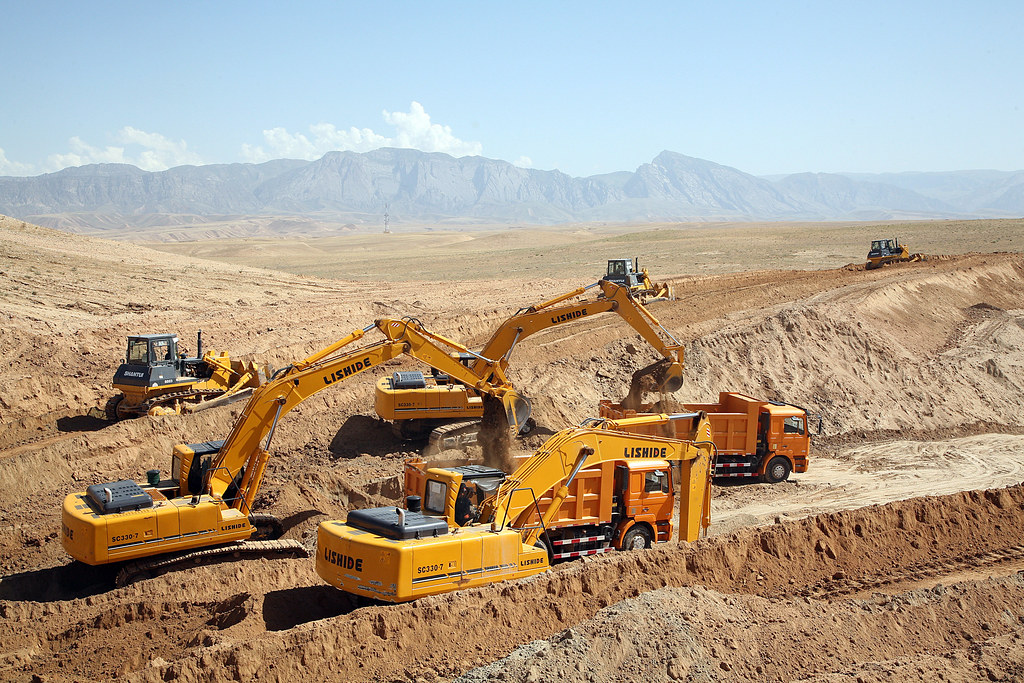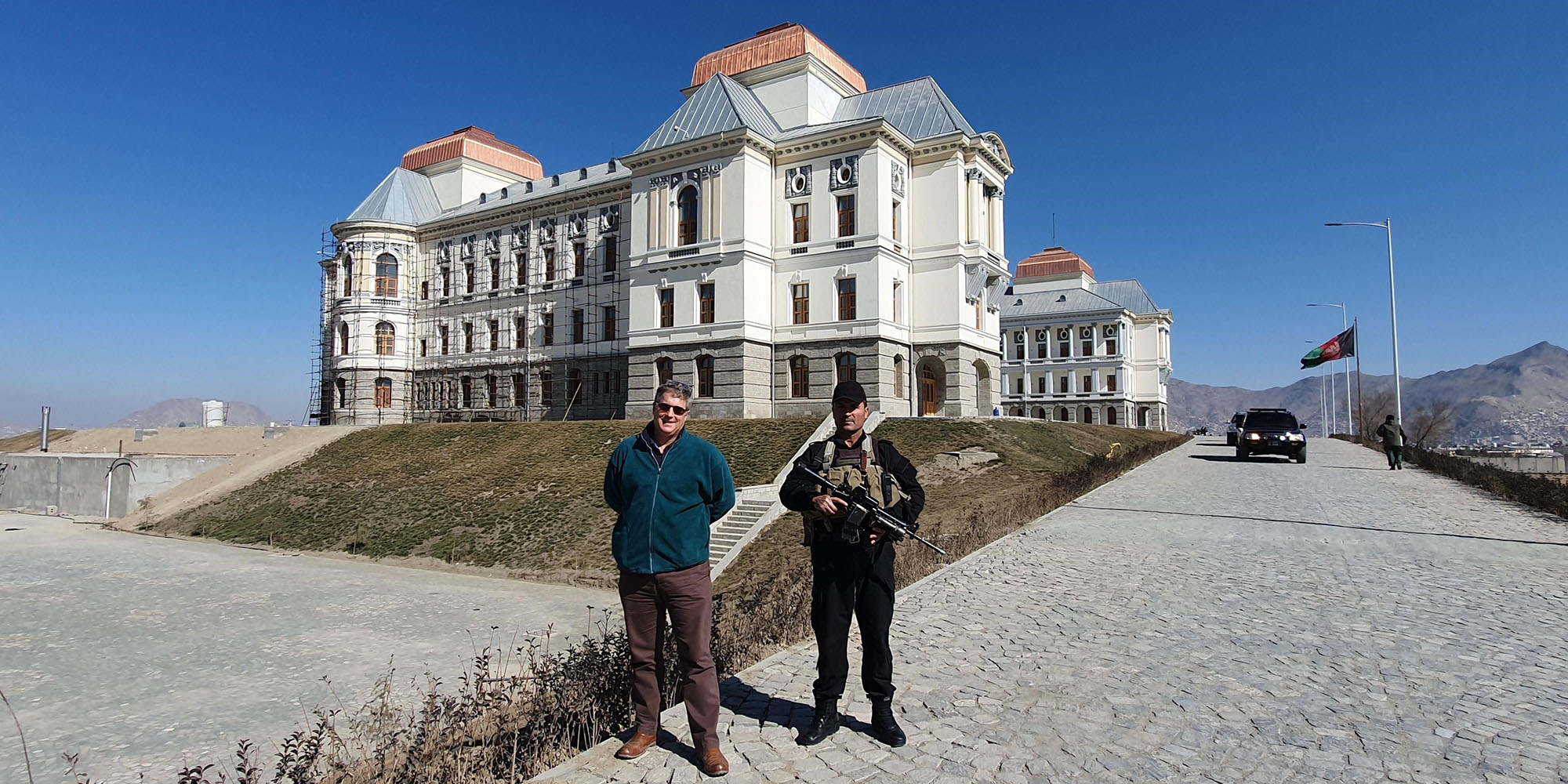News
Afghanistan (Part Two): The Saudi Arabia of Lithium
The second in a three-part series on the writer's trip to Afghanistan, this article looks at how the mining sector could help turn the country around. In it, there are policy lessons for donors and governments in Africa.

Whatever the doubts about the future path of its politics and concerns over ratcheting levels of violence, donors remain committed to Afghanistan, for now.
The 2020 Conference in Geneva pledged more than $12-billion for the period 2021-24. While this represents a drop of 20% over the $15.2 billion pledged in Brussels in 2016, and below projections for the country's needs, it's an indication that no-one intends, for now, to cut their losses and run.
This money is enough to keep things running, but is a sign of the times and a reminder of the need for a “normal” economy at some point to take over in Afghanistan from the “aid” one.Between 2001 and 2019, the intentional community in Afghanistan exceeded two million, an annual average of 134,000 personnel. These people expended over 33 million working days and 247 million working hours each year in Afghanistan. Was this not enough; or is this never enough? Or did those put to the task of getting the economy up and running do a bad job?
The answer lies somewhere in between.
Knowledgeable individuals see the task of promoting development in conflict zones as, in a word, hopeless. Whatever challenges you find in states which need aid to patch up their economies or security situations, you find on steroids in those at war needing aid.
The core problem concerns the alignment of international intentions with local interests. Where there is misalignment — where Western interests, in this case, were about defeating the Taliban and al-Qaeda and, later, nation-building, and Afghan concerns were centred on power and money — increasing amounts of money not only go to resolving problems but to make them much worse.
But the international approach undoubtedly didn't help, or at least help enough.
Development money
The flow of development money to Afghanistan started slowly, but the trickle soon turned to a torrent. By 2010, at the peak of involvement, the international community was spending more than $100-billion on in-kind military and other assistance every year in Afghanistan. This included more than $10-billion in development aid annually, amounting to $333 per Afghan man, woman and child per year. In some areas, such as the restive southern provinces, this concentration was much higher.
Yet, given the lack of development impact — as measured by the existence of an economy outside that supported by donor money — it may have been better (and considerably more efficient) if the international community had simply bombed the country with bundles of money.
“Aid expenditure in Afghanistan is highly distributive,” as one USAID official in Kabul put it in 2010. “There is too much money. It is so gross in its volume that the effort is mostly to disperse it rather than disperse it in a wise, sustainable way.”
Of course, not every Afghan received this aid. Much of it went into just a few hands. And much was spent on consumptive rather than productive areas of investment aimed at expanding business and creating jobs. One Oxfam/Swedish Committee for Afghanistan report of March 2018 on aid effectiveness concludes with the understatement: “A great deal of aid money has been poorly spent in the country.”
Combined with a pathological tendency to examine rather than “do”, attempts to create jobs in Afghanistan (as elsewhere) followed a pattern: an idea followed by a scoping study, normally backed up by a consultative process, an evaluation process producing a commission to conduct field-work to deliver a detailed report “workshopped” along the way by various representative constituents and appraised by peer reviewers in “deep-dive longitudinal” processes. And the product would have to be matched by a business plan which, normally after a period involving at least one turnover of donor staff, is condemned to a dusty plight on a shelf, forgotten when the idea is revived later and the process is started over again.
Experts spoke of “triggers”, “benchmarking”, “pillars”, “sequencing”, “goals”, “objectives”, “aims”, “principles”, “technical assistance”, “reviews”, “studies”, “workshops”, “deliverables” and “delivery”, “capacity building”, “value chains”, “implementation”, “embedded support”, and the ubiquitous “consultations” and “consultancies”.
Many aid programmes in Afghanistan were antithetical to economic development when led by those who apparently did not either understand or like business. Similarly, they did not help when geared to spending money to create a security rather than developmental effect. Instead of putting businessmen and women at the centre of growth, good ideas became military means or international causes rather than business cases.
Well-built, continually protected roads and electrification programmes could have been quick wins for the economy — and ultimately not that hard to protect if prioritised. But they always were a lower priority than taking the fight to the enemy, one downside of having soldiers do a development job.
As a consequence, the World Bank says now, nearly two decades after the war that toppled the Taliban: “Afghanistan's biggest economic challenge is finding sustainable sources of growth. With 70% of the country's population under the age of 30, job creation is an imperative for stability.”
Mineral wealth
Mining is one area routinely identified in the search for such drivers. But it has so far been an example of a missed opportunity.
Afghanistan enjoys an estimated $1-trillion in mineral wealth, including stores of copper, iron ore, precious gems, gold and lithium among other things. The first challenge seems to have been met: valuable stuff is in the ground, and in quantity. The next challenge is to get it out.
Afghans had hoped to see $1-billion in annual revenue and at least 8,500 direct jobs and 30,000 indirect jobs from the mining sector by 2017, comprising the Mes Aynak copper mine ($350-million) 40 kilometres southeast of Kabul, the Hajigak iron ore mine near Bamiyan ($550-million) and $150-million from hydrocarbons and gemstones.
Various national policy documents and programmes laid down the path to these developments. The US Geological Service collected data on assets during the 2000s, building on a wealth of material gathered during the Soviet period.
Afghanistan's mineral sector seemed ready for take off. Yet rather than benefit from this wealth, major investments have stalled, leaving warlords richer but the fiscus high and dry. Currently, the government's overall revenue is just half ($2-billion) of its budget, the rest being made up by donors.
Take Mes Aynak, which attracted a Chinese investor back in 2007. The deposit is said to be the second-largest copper body in the world, with an estimated 5.5 million tons of high-grade ore. The contract awarded to the Chinese was worth $2.9-billion, the largest in Afghanistan's history, and included the construction of a 400-megawatt power plant, a coal mine, a processing plant and railway links. But, 13 years later, the investment was frozen.
Some speculate this impasse was a result of US pressure, others cite the lack of transparency in the deal from the outset, while still others blame the decline in the copper price.
There were other concerns. Mes Aynak is a major archaeological site, with a Silk Road-era settlement comprising 400 Buddha statues, stupas and a 40-hectare monastery complex, which, like Bamiyan to the north, is a jewel among the “more than 500” Buddhist sites countrywide.
To ensure security around the Mes Aynak mine site, the government deployed 1,750 policemen with more than 80 checkpoints and security towers. More than $500-million has been spent by the government on security there since 2007. Over 150 security guards have been killed, even though the Taliban has explicitly promised not to target Mes Aynak or other infrastructure projects.
Minister of Mines and Petroleum Mohammad Haroon Chakhansuri says a lack of legal capacity and inconsistency over the last 15 years has blighted investment. A lack of transparency has not helped, though change is promised. The ministry has 2,666 staff, he notes, and an annual budget of $26-million, against mining revenue of just $24.5-million.

“At least 1,200 staff are in technical positions, but very few are qualified. Most have a school certificate. Our hydrocarbon specialist is an agriculture graduate and our laboratory manager has a 9th-grade school certificate,” explains the minister.
It is not surprising that Mes Aynak was awarded to the Chinese consortium over a rival Canadian bidder on the basis of its promises to pay a royalty of 19%, he says, plus a forward payment of $850-million, while building the railway, processing plant and power station.
“We did not have the capacity then to scrutinise this,” he admits. Fast forward 12 years and the Chinese company wants to amend “around 50 or more articles of the contract, including reducing royalties to 2.5%, forward payment of just $450-million in instalments, no railway, no power-station and no processing plant”.
Elsewhere, contractual challenges have slowed the Hajigak iron ore facility, while the minister, Wahidullah Shahrani, who presided over the award of a cement deal in Herat “to the Iranians”, was jailed on corruption charges over the deal. Other big projects are proceeding slowly, including the hydrocarbon basins of Katawaz, Helmand and Herat.
Attracting mining investment today is a relatively straightforward process which governments seek to make fraught by their own greed. However understandable that might be, it is a sure way to put off the best long-term investor, one actually intent on developing (rather than speculating on) the endowment.
The formula for attracting long-term foreign investors is well-known in the copper sector.Building investor trust
Good policy practice is today, more or less: Corporate tax on profits somewhere between 25% and 30%; expected royalty on revenue less transport (to get it to customer), between 3% and 5%, preferably varying with metal price, where 5% if the price is pretty high; no value-added tax and, if applied, paid back within 90 days; no export duty; no import duty on capital goods; maximum 5% state shareholding, as per the World Bank's mining code with the Democratic Republic of Congo; fiscal (tax) stability for minimum 15 years following the start of production; no restraints on hiring expats, subject to limits in numbers after production; no restrictions on the movement of cash with low levels of withholding tax, tax on dividends, etc.
In return, the investor should undertake to train up local skills within an agreed (and reasonable) timeframe; aid the local community with services and purchases of essential perishables; develop infrastructure (and, if this is of good to the country and not just the mine, have this cost deducted from taxes as Peru has done); and aim to reduce the expatriate workforce to less than 10% within 10 years.
It will take time to build trust between the government and investors given concerns about the frailties of the legal system. But there has been progress. In late 2018, the Extractive Industries Transparency Initiative suspended Afghanistan's membership. This was reinstated in 2020 following a review of its progress. On the 2020 Transparency International Corruption Perceptions Index, Afghanistan ranked 165th out of 180, from 172/180 two years before. The ministry and mines has produced a road map for investment as part of this trend. And there has been progress on smaller projects, with more than 100 in the pipeline.
But there are vested interests in slowing things down. Armed groups and local strongmen have a stake in instability since it enables illegal extraction. The country loses $300-million a year in this way. The Taliban dominates the area around Mes Aynak. Global Witness estimates that the Taliban has earned as much as $10-million annually from mining talc, which has become, next to opium, its main source of revenue.
To get projects rolling, there is a need to address the gulf between potential and reality. It's usually bridged by improved security and trust. To do this, things have to happen on the ground, not just in position papers and in vacuous commitments made around the conference table.
And there is time pressure. To wean itself off donors before they tire of Afghanistan, Kabul will have to take the initiative and seek out investors with an appetite for the long-term. Such an approach is true for all countries emerging from conflict.
This article was first published by The Daily Maverick.


